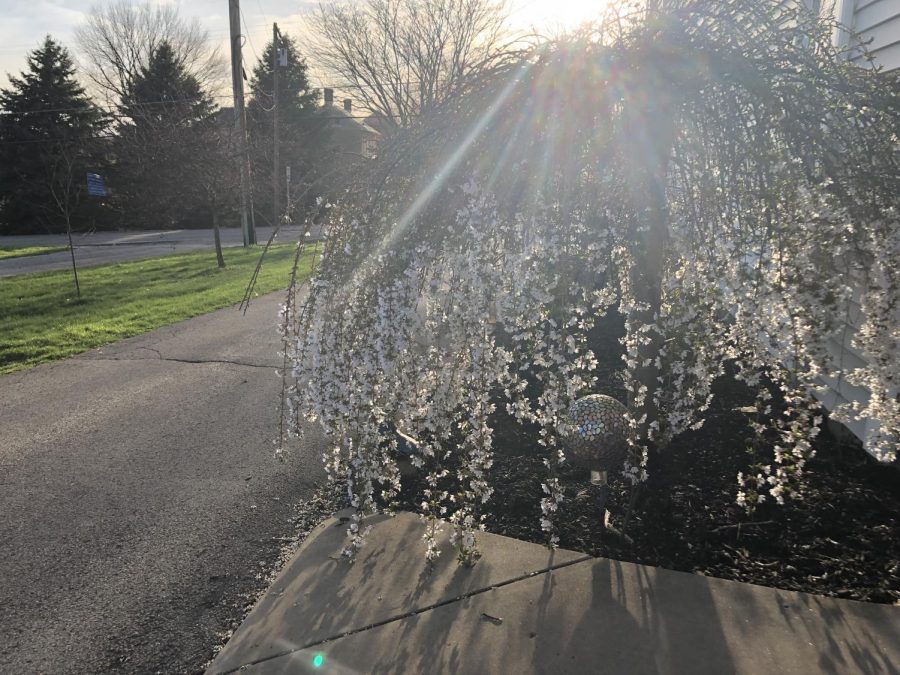Climate change: Yesterday’s actions becoming tomorrow’s consequences
In the world we live in today, we can often adopt the mindset of “out of sight, out of mind.” This may happen accidentally. For example, one may forget about the millions of Americans around the country struggling to feed their children if one is a middle-class-living citizen who never has to wonder from where their next meal is coming. One could also forget that for the past seven years, people in Syria have had to flee the country because of the civil war they’re experiencing. A lot of things that are going on in the world tend to go unnoticed because “ignorance is bliss.” However, this is an extremely dangerous way of thinking because soon, ignorance will certainly not be bliss.
The words “climate change” are two words that get thrown around quite frequently, and because of this, the consequences of it oftentimes gets forgotten. According to Google’s dictionary, climate change is “a change in global or regional climate patterns, in particular a change apparent from the mid to late 20th century onwards and attributed largely to the increased levels of atmospheric carbon dioxide produced by the use of fossil fuels.”
The good news is that 70% of Americans now accept that climate change is happening, which outnumber those who don’t. However, this still leaves about 98.1 million people still believing climate change to be a myth.
In essence, climate change is the effect global warming has on the earth. For example, the polar ice caps melting, the Great Barrier Reef dying and our oceans becoming uninhabitable.
According to senior Robin Kaufman, the sun gives off sunlight that reaches the earth, and then some of that energy and reflected back into space — if this all takes place, there is no problem. However, because we keep polluting the air, the light is absorbed through the greenhouse gasses and reflected through the earth’s atmosphere, which in turn warms the earth; hence, global warming.
Greenhouse gasses include water vapor, carbon dioxide, methane and chlorofluorocarbons (CFCs).
Water vapor is the most abundant greenhouse gas and contributes to the warming and increasing humidity of the earth. When a plethora of greenhouse gasses, including water vapor, is polluted into Earth’s atmosphere, it then amplifies the effects of carbon dioxide. Carbon dioxide is produced through deforestation movements and burning fossil fuels, which are natural fuels like coal or oil. Therefore, burning down our forests and sending more of that gas into the air will put more carbon dioxide into the earth’s atmosphere, thus trapping in more and more heat.
Methane is produced through decomposing landfills and agricultural processes, such as growing rice. For example, according to Iowa State University Extension and Outreach, rice grown without oxygen causes the soil organic matter to decompose under anaerobic (oxygen absence) conditions, which produces methane that escapes into the atmosphere. This process, once again, causes heat to be trapped inside the earth’s atmosphere.
So what will happen if one day the earth gets too hot? In essence, life on Earth is in serious danger. In an extreme case, it would be too hot to live here and hopefully by then scientists will have found a way to reach another planet. However, that may not even be necessary.
Society can make choices every day to combat global warming; for example, using renewable energy. Choosing an electricity company that gets at least half of its power from wind or solar can cut down on a lot of the energy we use. Investing in energy-efficient appliances can also help to keep much of the carbon dioxide out of the air, according to the National Resources Defense Council, Inc. (NRDC).
When shopping for refrigerators, washing machines, and other appliances, look for the Energy Star label. “It will tell you which are the most efficient,” the NRDC website says.
Unfortunately for the carnivores out there, decreasing the intake of meat can make a big difference. Livestock products are among the most resource-intensive to produce; therefore, eating meat-free meals can reduce the amount of energy we use to produce these foods. However, just eating the food we buy and not letting it go to waste can help a lot, as well.
Climate change is real, and it’s something the world needs to prioritize as a top-of-the-line problem. To find out how you can help, visit www.NRDC.com.



